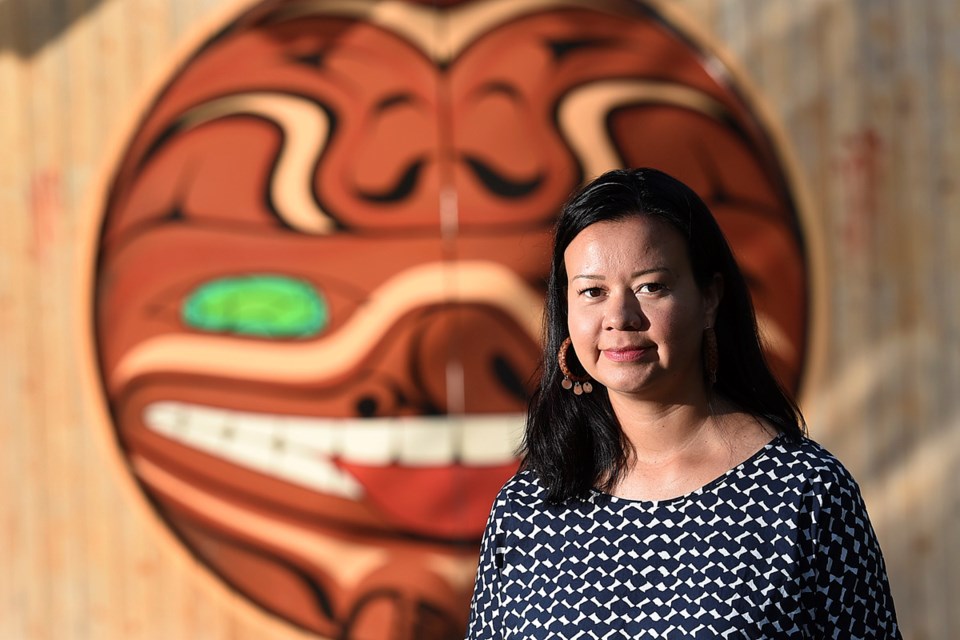Turn back the calendar to the mid-1980s.
Imagine a boy of about 12 or 13 years old, riding in a truck with his father and heading up country to a camp spot in B.C.
It’s summertime.
Somewhere along the road, traffic comes to a sudden stop.
Up ahead, band members from a local First Nation have blockaded the road. The boy is confused and doesn’t understand the significance of the event.
That boy is now an adult and Vancouver’s city manager.
“This was different for me, not knowing the complexity and the dynamics behind all of that,” said Sadhu Johnston, who lived in Colorado at the time and was visiting his father in Vancouver. “Now, as an adult, I can think about it and it makes more sense. But as a kid, it was like being trapped somewhere.”
Johnston tells the story in response to a question on how knowledgeable he was about the history of Aboriginal peoples in B.C. when he accepted the job in 2009 as deputy city manager.
The truth is, he said, he didn’t know much.
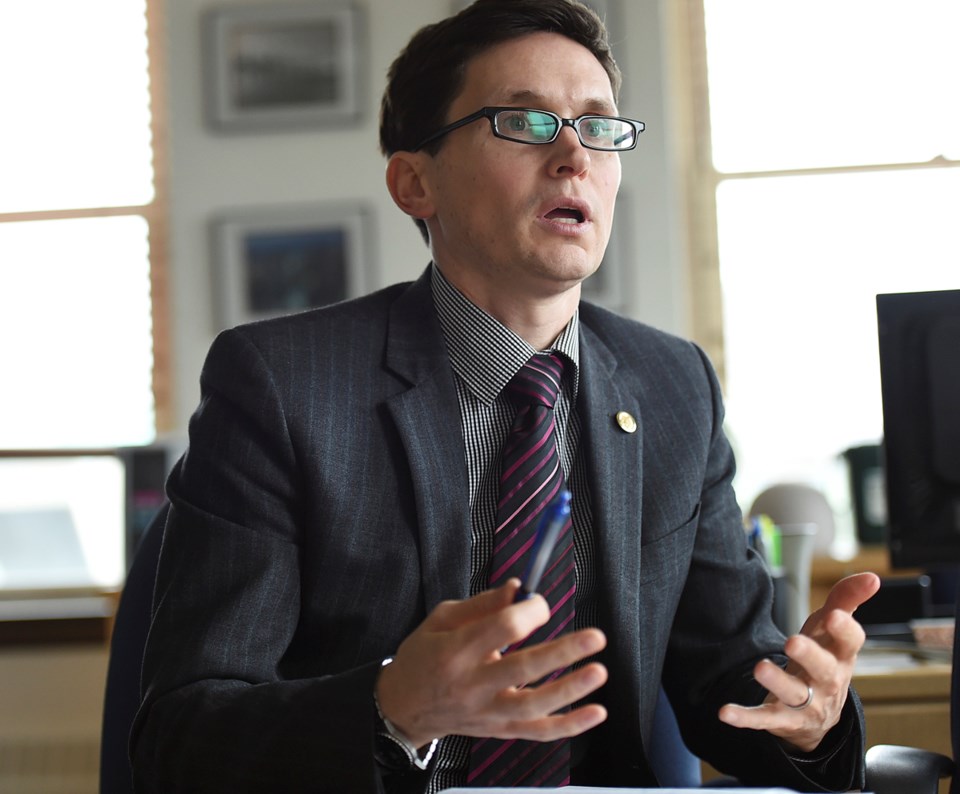
He had left a job in Chicago to work at city hall, a place that is currently going through a major transformation on how it responds to, engages with and honours indigenous people, their culture and their history.
Johnston, who has dual citizenship and became city manager earlier this year, is charged with overseeing that transformation, which has been guided by a city council driven to improve relations with local First Nations, the city’s urban Aboriginal residents and reconcile a past of hurt and discrimination.
“It’s been a very interesting and steep learning curve for me in how we as a city can do this work,” he said from his office at city hall. “We’re figuring this out as we go and there are probably areas where we’ll screw up. But there’s opportunities for us to strengthen those relationships.”
The work, as Johnston calls it, involves a bit of everything, including hiring new staff, ceremony, policy, protocol, art, training, funding, regular meetings with First Nations, reaching out to urban Aboriginal organizations and a whole lot of goodwill.
Some big steps have already been taken.
City council proclaimed Vancouver a city of reconciliation, approved a formal motion that says Vancouver is on the unceded traditional homelands of the Musqueam, Tsleil-Waututh and Squamish nations and endorsed the United Nations Declaration on the Rights of Indigenous Peoples.
The present council also participated in a ceremony in which members of the three local nations used cedar boughs dipped in water to “brush off” the politicians to symbolize the beginning of a fresh start.
It was the first time such an event took place at city hall and Robert Joseph had a front row seat. As hereditary chief of the Gwawaeanuk First Nation near Alert Bay and the ambassador for Reconciliation Canada, Joseph has dedicated his adult life to bridging differences borne from intolerance, ignorance and racism.
“When I first came to Vancouver in the 1960s as a young man, anything involving Aboriginal spirituality or culture was considered taboo,” Joseph said after the ceremony in December 2014. “Here we are these decades later and our leadership in this great municipal hall of Vancouver are open to the idea that all of our spiritual ways and beliefs have value and purpose.”
The shift at city hall appears to be contagious.
In the past decade, the Vancouver School Board opened an Aboriginal-focused school, launched an enhancement program for Aboriginal students and hired Shane Pointe from the Musqueam Indian Band to teach students about Coast Salish culture, languages and ceremony.
The Vancouver Police Department, which had to answer for the death of Mi’kmaq First Nation member Frank Paul in 1998 and the bungling of the missing and murdered women investigation, has conducted cultural sensitivity training for hundreds of its officers and created a program with Aboriginal women to stop violence in the Downtown Eastside.
On the business side, the Musqueam, Squamish and Tsleil-Waututh have reacquired three large parcels of land in Vancouver and plan to redevelop the 120 acres to generate income for their respective bands.
The elections of local indigenous women Jody Wilson-Raybould to Ottawa, where she was appointed justice minister, and Melanie Mark to Victoria, where she represents Vancouver-Mount Pleasant, are evidence of the shift in political arenas.
All of these developments point to progress for the three local nations and Aboriginal community in Vancouver. In a six-part series beginning today with a focus on city hall, the Courier will examine the depth of that progress and ask the question: Is it authentic and will it lead to real change for indigenous people in the city?
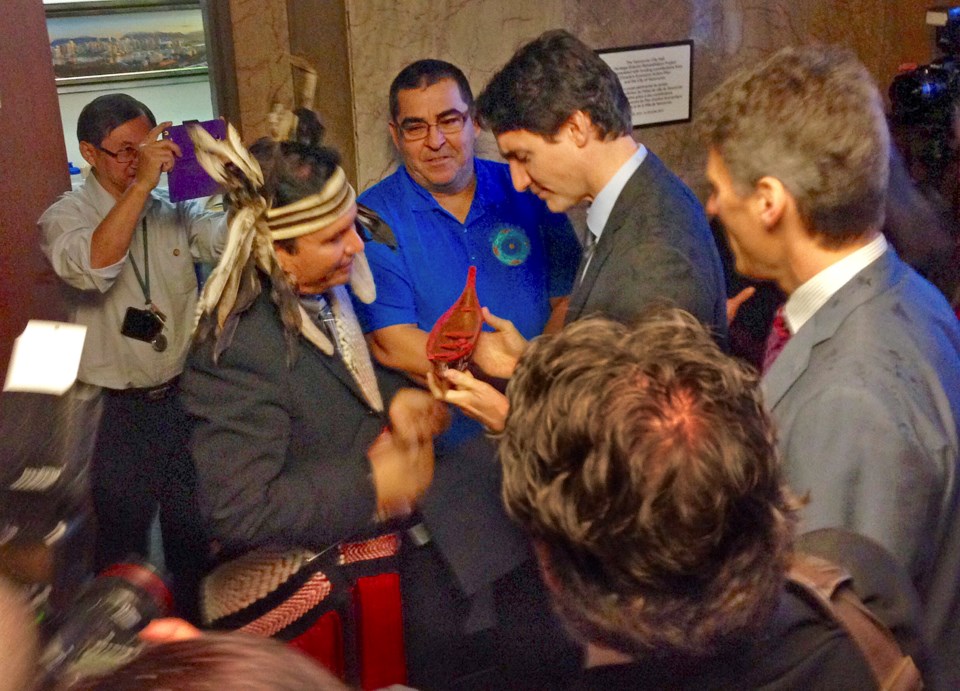
Moving forward
Ginger Gosnell-Myers wastes no time in answering the question.
“Yes,” said Gosnell-Myers, who was appointed the city’s first-ever manager of Aboriginal relations in April. “I’ve grown up in politics and have been an advocate on the ground, and find myself here at city hall and feel pretty honoured to be part of these changes, and wouldn’t be here if it wasn’t authentic.”
She has become the city’s utility person on all-things Aboriginal, liaising with departments, writing reports, developing policy and working her many connections with Aboriginal groups.
“There’s a lot of openness to move all of this work forward,” she said from a meeting room at city hall. “I think everybody is really excited about the possibility of a city that reflects indigenous peoples — as it should be. This is an indigenous place.”
Her surname may ring a bell. The Gosnell in Gosnell-Myers also belongs to her uncle, Joseph Gosnell, the celebrated Nisga’a leader whose work as chief led to the signing of the Nisga’a Treaty in the late 1990s, the first modern treaty involving a First Nation and senior governments.
Gosnell-Myers, whose heritage is Nisga’a and Kwakwaka’wakw, had worked with the city in 2013 to help organize the Truth and Reconciliation Commission of Canada event in Vancouver and the Walk for Reconciliation. She stayed on as an Aboriginal planner before being promoted to manager.
Some of her most informative work occurred before she started her new role at city hall. Between 2008 and 2011, Gosnell-Myers was project manager for the Environics Institute’s Urban Aboriginal Peoples Study, which is said to be the largest research project on Aboriginal people living in Canadian cities.
“My biggest surprise was how Aboriginal people have so many similarities to the general Canadian population,” she said. “I think I was too wrapped up in our people as a set of issues and hardships and resilience and needing to overcome all of this because that’s what we talk about all the time, and we deal with it with our families and with our friends.”
She continued: “But that study allowed me and others who were on the project team to really see that we are a population that has a lot of aspirations for a better life.”
That work has translated well into her job at the city. She is breaking new ground, both previously as a planner and now as a manager. But getting started has come with its challenges.
In what she described as “probably dirty laundry,” Gosnell-Myers said the city didn’t have a handle on the number of projects it was working on that involved local First Nations or the urban Aboriginal community.
“Were we doing a dozen projects with them? Were we doing 50 projects with them? And to what level? And who were we working with and which staff was working on these projects? And how are they going?”
She paused before continuing.
“So there was no collection, no understanding, no alignment. We’re doing a lot of work to organize ourselves so that we do know.”
A door wide open
That alignment became clearer in January.
City council heard from Gosnell-Myers that staff identified 27 of 94 recommendations set out in the Truth and Reconciliation Commission of Canada’s final report as “actionable” by the city.
Everything from child welfare, education, language and culture to health, justice, sports and business were among the issues and topics outlined in the 27 recommendations.
That same morning at city hall, council heard from Kevin Barlow, the CEO of the Metro Vancouver Aboriginal Executive Council, which acts on behalf of an estimated 60,000 Aboriginals living in the region.
Barlow stressed the importance of creating a plan to construct 1,500 new social housing units across Metro Vancouver by 2020.
The evidence for that request is based on this: 31 per cent of Metro Vancouver’s homeless population identified as Aboriginal in the last regional homeless count; it was 38 per cent in Vancouver’s count in March of this year. Aboriginal people comprise less than three per cent of the city’s population.
“Housing and homelessness is a true measure of reconciliation,” Barlow wrote in a report that accompanied his presentation. “A stable home opens a door wide open for huge socio-economic growth when indigenous people can then participate fully in the B.C. and Canadian economy.”
The city’s response is a commitment to build 600 to 700 social housing units by 2020, spread over four buildings on a stretch of Main Street and along East Hastings. The projects include a shelter, social housing, health services and a new native youth centre.
B.C. Housing, the Aboriginal Friendship Centre and the Urban Native Youth Association are involved in the projects. The city has put up the land for two of the four buildings, provided some grant money and owns part of the land on a third.
The overall tab hasn’t been calculated and finding money to complete the projects remains an open question. The go-to answer from Mayor Gregor Robertson and others at city hall since Justin Trudeau and the Liberals won victory last year is that money appears to be on its way.
The prime minister has promised Aboriginal leaders a renewed “nation-to-nation” relationship and to “advance progress” on issues such as housing, health, child welfare and education.
In unveiling the Liberals’ budget in March, Trudeau’s government promised $8.4 billion for First Nations, a large portion of which is directed at housing.
In June, B.C. Housing Minister Rich Coleman called on Aboriginal housing providers and municipalities to apply for $50 million in funding to help create “safe, affordable homes for Aboriginal people in need.”
It all sounds promising to Barlow and he credited city council for endorsing his organization’s housing strategy and lobbying senior governments for funding.
But Barlow pointed out in an interview that the majority of the $8.4-billion promise from the Trudeau government is dedicated to on-reserve housing, water services and waste management.
“That’s the challenge with the urban Aboriginal population — we have to argue for a share of those resources,” said Barlow, who noted that spending money on housing, health services and job creation in Metro Vancouver will reduce homelessness, ease the strain on health care providers and allow people to be self-reliant. “It would seem ludicrous not to do this.”
Developing protocol
A key part of the city’s reconciliation efforts is educating its own staff about First Nations history and culture and how it can be applied while on the job.
The potential for many city departments to work on projects that in some large or small way involve Aboriginal people or land is constant.
Road construction, for example, which requires digging up land that may have a historical connection to one of the three local nations is without protocol.
“The past practice has been common sense and respect,” said Gosnell-Myers, noting protocol is being developed with the three nations, including a Locarno Midden management plan. “Across Canada, that’s not been the case, with developers finding artifacts and just bulldozing over them and not telling anybody.”
Gosnell-Myers was present at the Aboriginal Friendship Centre in June to open a “cultural competency training” workshop for 31 city staff. (More than 140 staff have been trained since the session).
In introducing the workshop’s leader, Bob Joseph, she told staff the purpose of the training was really “to provide the education you were denied here in Canada.”
Joseph is the president of Indigenous Corporate Training Inc. and began the session by saying he was not, in fact, chief Robert Joseph, the hereditary chief of the Gwawaeanuk First Nation and ambassador of Reconciliation Canada, who attended the brushing off ceremony at city hall in 2014. He is his son.
The Courier was given brief access to the workshop, staying long enough to hear Joseph’s opening remarks and outline what was ahead over the next three hours.
Each participant was given a book authored by Joseph and his wife Cynthia, titled Working Effectively with Aboriginal Peoples.
The book covers a range of topics, from residential schools to court battles to how technical terms, acronyms and colloquialisms such as “low man on the totem pole” should be avoided in conversation.
Other tips:
- In indigenous culture, a person’s word is more important than anything written on a piece of paper.
- A person shouldn’t offer things that cannot be delivered. Nothing can damage a person’s reputation more than failing on a promise.
- “Stakeholder” is a commonly used business term that should be avoided at all times when working with Aboriginal peoples. They are not stakeholders — they have constitutionally protected rights and are used to dealing with government on a “nation-to-nation” basis.
The voluntary workshop attracted staff from various departments, including engineering, digital services, film and special events and elections manager Jessica Nelson, who spoke to the Courier after the session.
Nelson said she recalls learning about First Nations history in elementary and high school in North Vancouver. That education was bolstered by her years at university, where she completed a degree in sociology and did her master’s in public policy.
“What I found very interesting [about the workshop] was getting more information about the diversity of the languages and the cultural practices across the country,” she said, pointing out the importance of protocol and understanding the difference between a hereditary chief and elected chief.
The training, she said, inspired her to develop strategies to get more Aboriginal people to the polls in the 2018 civic election. The city doesn’t track the heritage of voters but Nelson said a study Elections Canada did after the 2011 federal election showed lower voter turnout among Aboriginals, although there is evidence to suggest that increased in the 2015 election.
“I definitely want to explore this [2018] election [by] building a lot more important partnerships with Aboriginal organizations and non-profits in Vancouver and really working a lot more closely with those groups,” she said. “We want to ensure that those who are living in Vancouver are excited about voting, are engaged and feel that there is some value to vote.”
Some of the more practical advice Nelson took away from the session was that for many Aboriginal peoples, continuous eye contact may not be expected or accepted as a courtesy of conversation.
Joseph noted in his book that residential school survivors have said that eye contact with school or church officials often led to physical punishment.
Handshakes are also not common with Aboriginal peoples, although it is not meant as a sign of disrespect. It’s simply a custom not widely practised, according to Joseph.
Nelson learned a true sign that signalled her relationship building with the Aboriginal community was on the right track.
“Bob sort of joked that if you’re asked to dance, you shouldn’t turn it down because that means they like you.”
‘A change in the narrative’
Vancouverites will be doing all kinds of dancing when Canada marks its 150th birthday next year.
But it won’t simply be a party, or recognition of how far the country has come since Confederation.
It will be more than that in Vancouver.
The city will bill the event as “150-plus,” an acknowledgement that Vancouver and its first residents have been around longer than Capt. George Vancouver and the European settlers. Musqueam people, for instance, have been at the mouth of the Fraser River for thousands of years.
There are plans for a canoe festival in False Creek, performances and exhibits downtown and significant First Nations art to be installed on the campus of city hall. The goal is to make Vancouver the Aboriginal cultural tourism destination in Canada in 2017.
It’s all in the name of reconciliation.
Chief Wayne Sparrow and his Musqueam Indian Band will play a large part in the events. Sparrow said he likes the renewed relationship with the city, singling out Coun. Andrea Reimer for working as a bridge between the municipality and the band.
“I think they’re leading the way from the political side,” Sparrow said. “It shows that we can work together instead of working against each other. I have to take my hat off to Andrea Reimer and the mayor and the council for being leaders.”
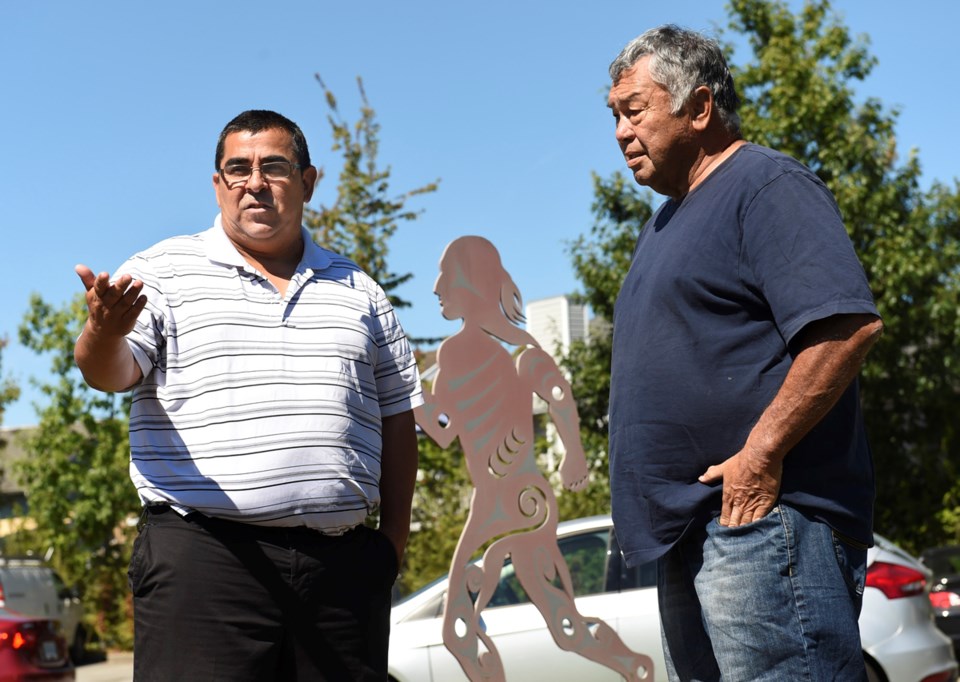
Chief Ian Campbell of the Squamish Nation also sees signs of progress in the relationship with the city, saying “there seems to be a change in the narrative.”
He, Sparrow and Tsleil-Waututh Chief Maureen Thomas were among the first people Trudeau met when he was welcomed by the mayor to city hall last December. The three nations also went to Ottawa with the mayor to protest the Kinder Morgan pipeline proposal and have regular meetings with city staff and city council.
But Campbell isn’t naive to think the relationship has simply come from the goodwill of politicians. It’s driven, he said, more by court decisions and the courage of residential school survivors to tell their stories. It’s what he calls “leverage.”
“Much of the changes that I’m seeing in the last 15 years haven’t necessarily been out of moral goodwill by any level of government,” he said. “It’s been by creating leverage that has brought parties together to allow us to redefine the relationship and reframing it.”
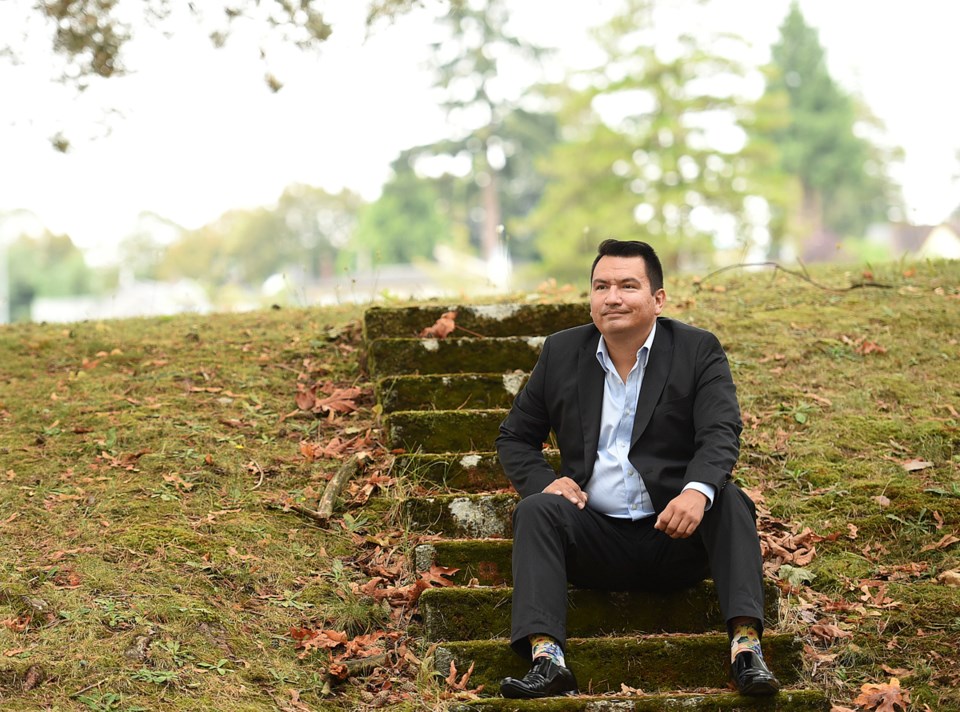
He continued: “But I think the authenticity is definitely there, people are sincere, they’re very respectful. Most Canadians have been quite complacent on Aboriginal issues for a very long time. We’re not far removed from when First Nations weren’t even citizens in our own lands. We’re not far removed from my parents’ era where it was illegal for us to practise our culture.”
Paths of reconciliation
Interestingly, Campbell and Sadhu Johnston are from the same generation.
Campbell is 43, Johnston, 42.
Their backgrounds couldn’t be any different.
Or are they?
Here’s another story about Johnston: It begins in Germany, where many of his Jewish ancestors were killed in the concentration camps during the Second World War.
As he said, “my family history was effectively erased.”
Johnston sees parallels to what indigenous people experienced during colonialism. But he knows the experience is different, although equally poignant.
He thought about his shared history when he attended a forum in which Jewish, Japanese and First Nations elders met to discuss surviving the Holocaust, internment camps and residential schools.
“It was really illuminating for me to see those three elders talking about what reconciliation meant for them,” he said of the talk last year in North Vancouver, which is home to the Squamish Nation. “I’ve now been able to connect reconciliation to my own past. The path that I live on has been charted 100 per cent by the fact that the Nazis did what they did. My grandma was 17, she escaped Nazi Germany, she went to South Africa, lived in poverty, starved, was on her own, had no money, raised herself up, built a career, got married, never went back to Germany, never went back to Europe to live.”
All those years later, Johnston is now in a role at city hall that allows him to help steward the work being done to reconcile a regrettable past in this country’s history.
“It’s an incredible honour, both personally and professionally.”
Next week: the Courier looks at land development.
@Howellings
